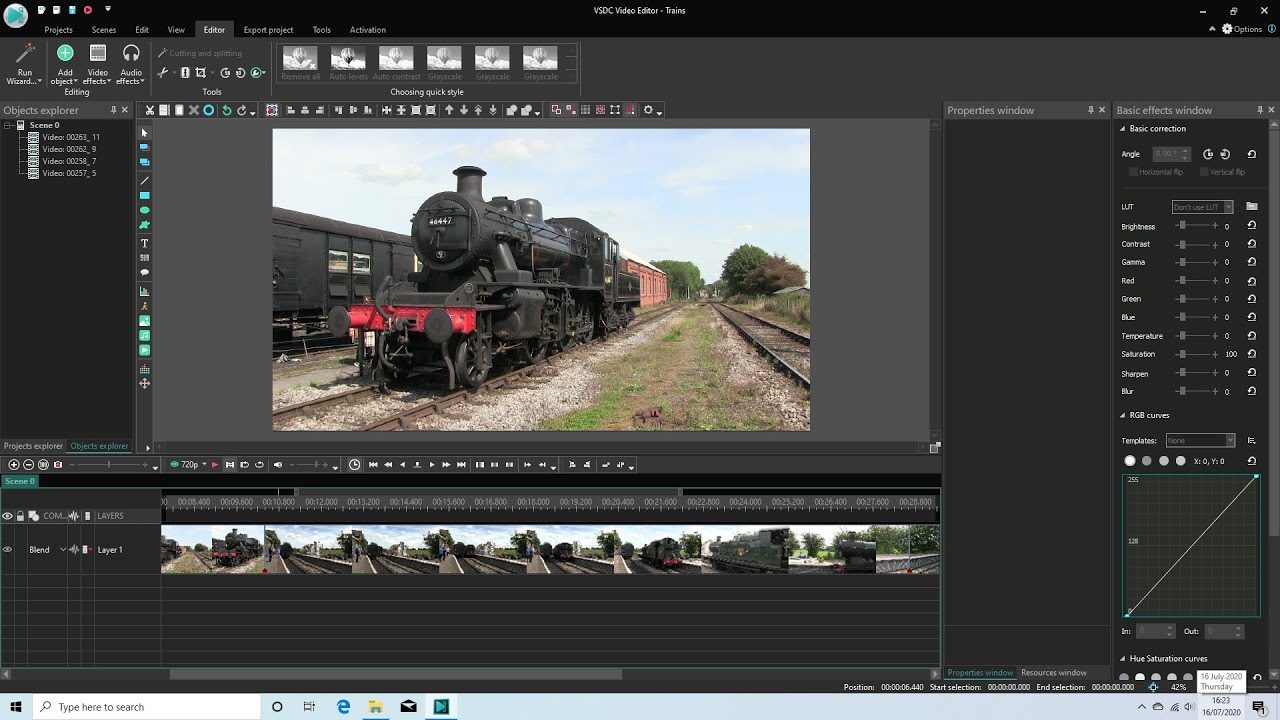VSDC Tutorial: Create Split Screen Video Clips A Video Editing Tutorial.
How to create quick and easy split screen video/movie clips using VSDC free video editor.
VSDC Beginners Tutorial: Quick And Easy Video Editing Using The Free Video Editor. https://youtu.be/f1l6vk9dYr4
VSDC Free Video Editor is a non-linear editing (NLE) application developed by Flash-Integro, LLC. The program is capable of processing high-resolution footage including 4K UHD, 3D and VR 360-degree videos. VSDC allows for applying post production effects, live color correction, and motion tracking. It supports VirtualDub plug-ins as well as the ability to capture video from screen, record voice, save multimedia files to numerous formats including those pre-configured for publishing on Facebook, Vimeo, YouTube, Instagram, and Twitter.
Basic video editing features
Cutting, splitting into parts, merging, trimming, cropping, rotating, flipping, playing backwards, volume changing
Resizing, quality and resolution settings
Video stabilization
Speed change
Text and subtitles insertion
Slideshow wizard offering 70+ transition effects
Snapshots
DeLogo filter automatically hiding unwanted elements in a video with a blurred or pixelated mask
360-degree video to 2D video conversion
3D video to 2D video conversion
Quick Instagram-like filters
Inpainting mask modes to help repair corrupted pieces of an image or a video.
Full-featured text editor for titles and text-related effects.
Embedded video converter supporting more than 20 formats
Built-in screen recorder
Built-in voice recorder
Video editing is the manipulation and arrangement of video shots. Video editing is used to structure and present all video information, including films and television shows, video advertisements and video essays. Video editing has been dramatically democratized in recent years by editing software available for personal computers. Editing video can be difficult and tedious, so several technologies have been produced to aid people in this task. Pen based video editing software was developed in order to give people a more intuitive and fast way to edit video.
Though once the province of expensive machines called video editors, video editing software is now available for personal computers and workstations. Video editing includes cutting segments (trimming), re-sequencing clips, and adding transitions and other Special Effects.
• Linear video editing uses video tape and is edited in a very linear way. Several video clips from different tapes are recorded to one single tape in the order that they will appear.
• Non-linear editing systems (NLE) allow video to be edited on computers with specialized software. This process is not destructive to the raw video footage and is done by using programs such as DaVinci Resolve, Avid Media Composer, Adobe Premiere Pro and Final Cut Pro.
• Offline editing is the process by which raw footage is copied from an original source, without affecting the original film stock or video tape. Once the editing is complete, the original media is then re-assembled in the online editing stage.
• Online editing is the process of reassembling the edit to full resolution video after an offline edit has been performed. It is done in the final stage of a video production.
• Vision mixing is used when working within live television and video production environments. A vision mixer is used to cut live feed coming from several cameras in real time.
Like some other technologies, the cost of video editing has declined over time. The original 2″ Quadruplex system cost so much that many television production facilities could only afford a single unit, and editing was a highly involved process that required special training. In contrast to this, nearly any home computer sold since the year 2000 has the speed and storage capacity to digitize and edit standard-definition television (SDTV). The two major retail operating systems include basic video editing software – Apple’s iMovie and Microsoft’s Windows Movie Maker. Additional options exist, usually as more advanced commercial products. As well as these commercial products, there are opensource video-editing programs. Automatic video editing products have also emerged, opening up video editing to a broader audience of amateurs and reducing the time it takes to edit videos.
Video editing can be used for many purposes such as education, entertainment, and documentation.[
• Virtual reality—Advancements are being made to help with editing spherical video used in virtual reality settings. The ability to edit in virtual reality was created so that users would be able to check their video edits in real time, without having to continually view the video in a headset between edits.
• Social media—Video editing can be used for entertainment and other purposes on YouTube and other social media sites. School teachers have used video editing to help their students retain information and extend lessons outside the classroom.

